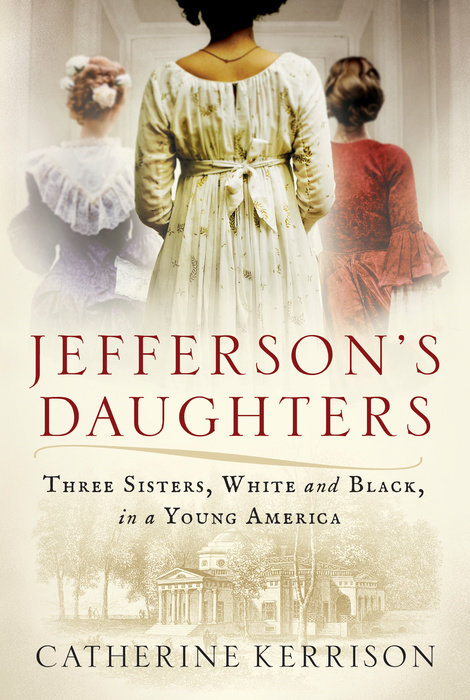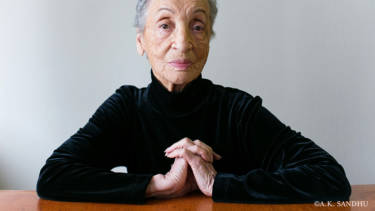Iola Leroy or, Shadows UpliftedPosted in Books, Media Archive, Novels, Slavery, United States, Women on 2018-03-05 01:19Z by Steven |
Iola Leroy or, Shadows Uplifted
Broadview Press
2018-02-28
352 pages
5½” x 8½”
Hardcover ISBN: 9781554813858 / 1554813859
(Originally published in 1892)
Frances E. W. Harper (1825-1911)
Edited by:
Koritha Mitchell, Associate Professor of English
Ohio State University
Frances Harper’s fourth novel follows the life of the beautiful, light-skinned Iola Leroy to tell the story of black families in slavery, during the Civil War, and after Emancipation. Iola Leroy adopts and adapts three genres that commanded significant audiences in the nineteenth century: the sentimental romance, the slave narrative, and plantation fiction. Written by the foremost black woman activist of the nineteenth century, the novel sheds light on the movements for abolition, public education, and voting rights through a compelling narrative.
This edition engages the latest research on Harper’s life and work and offers ways to teach these major moments in United States history by centering the experiences of African Americans. The appendices provide primary documents that help readers do what they are seldom encouraged to do: consider the experiences and perspectives of people who are not white. The Introduction traces Harper’s biography and the changing critical perspectives on the novel.
Contents
- Acknowledgements
- Introduction
- Frances Ellen Watkins Harper: A Brief Chronology
- A Note on the Text
- Iola Leroy; Or, Shadows Uplifted
- Appendix A: Slavery, Civil War and Emancipation, Reconstruction and Its Demise
- From the Fugitive Slave Act (1850)
- United States Supreme Court Justice Roger Taney, the Dred Scott Decision (1857)
- From the First Confiscation Act (1861)
- From the Second Confiscation Act (1862)
- The Emancipation Proclamation (1863)
- From the Freedmen’s Bureau Act (1865)
- The Thirteenth Amendment (1865)
- From the Fourteenth Amendment (1868)
- The Fifteenth Amendment (1870)
- The Compromise of 1877
- From United States Supreme Court Justice Billings Brown, Plessy v. Ferguson (1896)
- Appendix B: Not White? Then You Can’t Be Equal
- From Abraham Lincoln, Address on Colonization to a Deputation of Negroes (1862)
- From Frances Harper, “Mrs. Frances E. Watkins Harper on the War and the President’s Colonization Scheme,” Christian Recorder (27 September 1862)
- From Michigan Supreme Court Justice James Campbell, The People v. Dean (1866)
- Appendix C: Black Families in Slavery and Freedom
- From Frederick Douglass, Narrative of the Life of Frederick Douglass (1845)
- Dictated letters between enslaved husbands and wives while separated by their owners
- From “Arrest of Fugitive Slaves,” Cincinnati Gazette (29 January 1856)
- Frances Harper, “The Slave Mother: A Tale of Ohio” 1857)
- Testimony about enslaved men and women who fled slavery to join the Union effort and often planned to return to help family members escape (1863)
- Letter from a black soldier to his children (1864)
- Letter from a black soldier to the owner of one of his daughters (1864)
- Newspaper Notices in Hopes of Finding Lost Loved Ones after Emancipation (1866–93)
- Appendix D: Education in Slavery and Freedom
- From the South Carolina Negro Act (1740)
- Account about an enslaved woman who ran a midnight school (1881)
- Account of teaching/learning in secret during slavery (1902)
- An account of finding the spark for learning while enslaved (1885)
- Accounts of the consequences of learning to read and write
- Account of black soldiers wanting education
- Account of recently emancipated people’s eagerness to learn
- Testimony on Ku Klux Klan preventing school attendance after Emancipation (1872)
- Appendix E: Preventing Freedom Even after Emancipation
- Laws constraining black girls and boys via apprenticeship and African Americans of every age via vagrancy statutes (1865)
- Testimony about Ku Klux Klan raping black women whose husbands/fathers voted (1871)
- From Henry W. Grady, “The Race Problem in the South” (1889)
- From Ida B. Wells, The Red Record: Tabulated Statistics and Alleged Causes of Lynching in the United States (1895)
- Appendix F: Black Women’s Activism
- From Frances Harper, “We Are All Bound Up Together” (1866)
- Frances Harper, “Aunt Chloe’s Politics” (1872)
- From Frances Harper, “Colored Women of America,” Englishwoman’s Review (15 January 1878)
- From Frances Harper, “The Woman’s Christian Temperance Union and the ColoredWoman,” African Methodist Episcopal Church Review (1888)
- From Frances Harper, “Enlightened Motherhood: An Address … Before the Brooklyn Literary Society” (15 November 1892)
- From Fannie Barrier Williams, “The Intellectual Progress of The Colored Women of the United States Since the Emancipation Proclamation” (1893)
- Appendix G: Being Black and a Woman: Aesthetics and Reception
- William J. Watkins, “The Reformer,” Frederick Douglass’ Paper (7 April 1854)
- Grace Greenwood, Impressions of Harper as a Speaker (1866)
- From Anna Julia Cooper, “The Status of Woman in America” (1892)
- Reviews of Iola Leroy
- “Publications Reviewed,” Christian Recorder (12 January 1893)
- From “Review 1,” Independent (5 January 1893)
- Richmond Planet (21 January 1893)
- From “Recent Fiction,” The Nation (23 February 1893)
- From “Our Book List,” A.M.E. Church Review (April 1893)
- “Book Review,” Friends’ Review; a Religious, Literary and Miscellaneous Journal (22 June 1893)
- Review of Reviews (January 1895)
- From “Recent Fiction,” Independent (29 October 1896)
- From Edward Elmore Brock, “Brock’s Literary Leaves,” Freeman (Indianapolis) (14 August 1897)
- [W.E.B. Du Bois,] “Writers,” Crisis (April 1911)
- Works Cited and Select Bibliography






